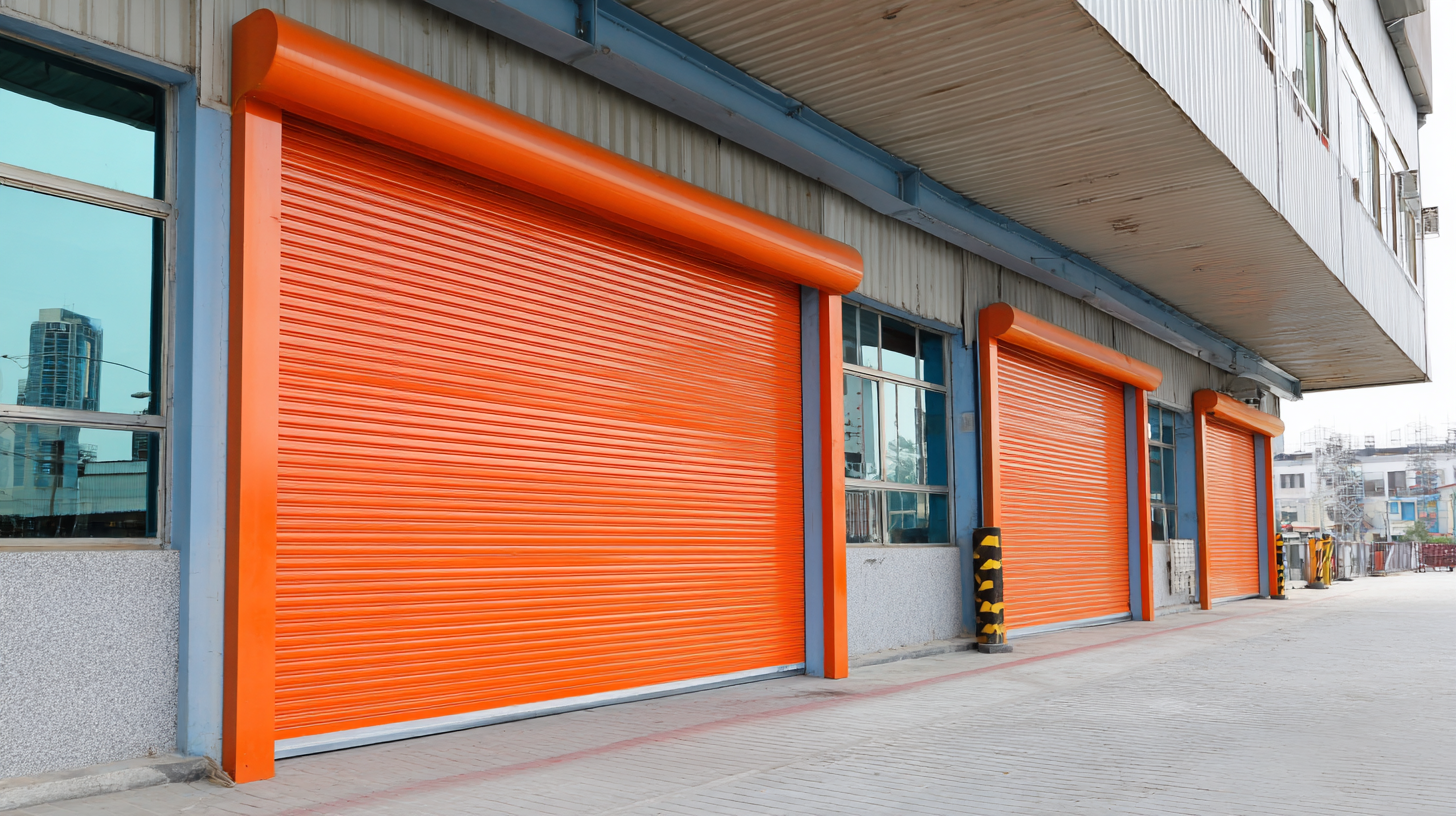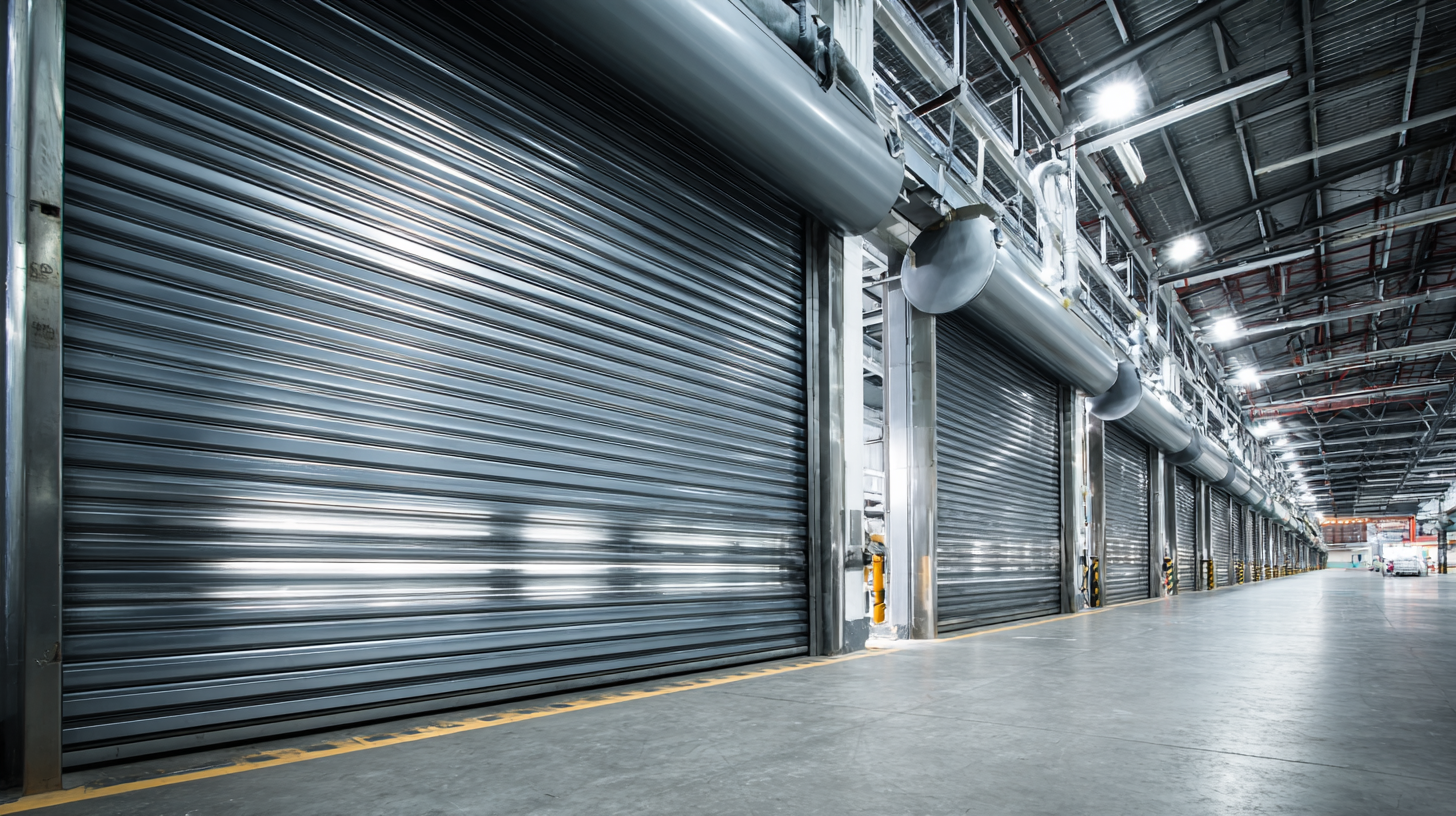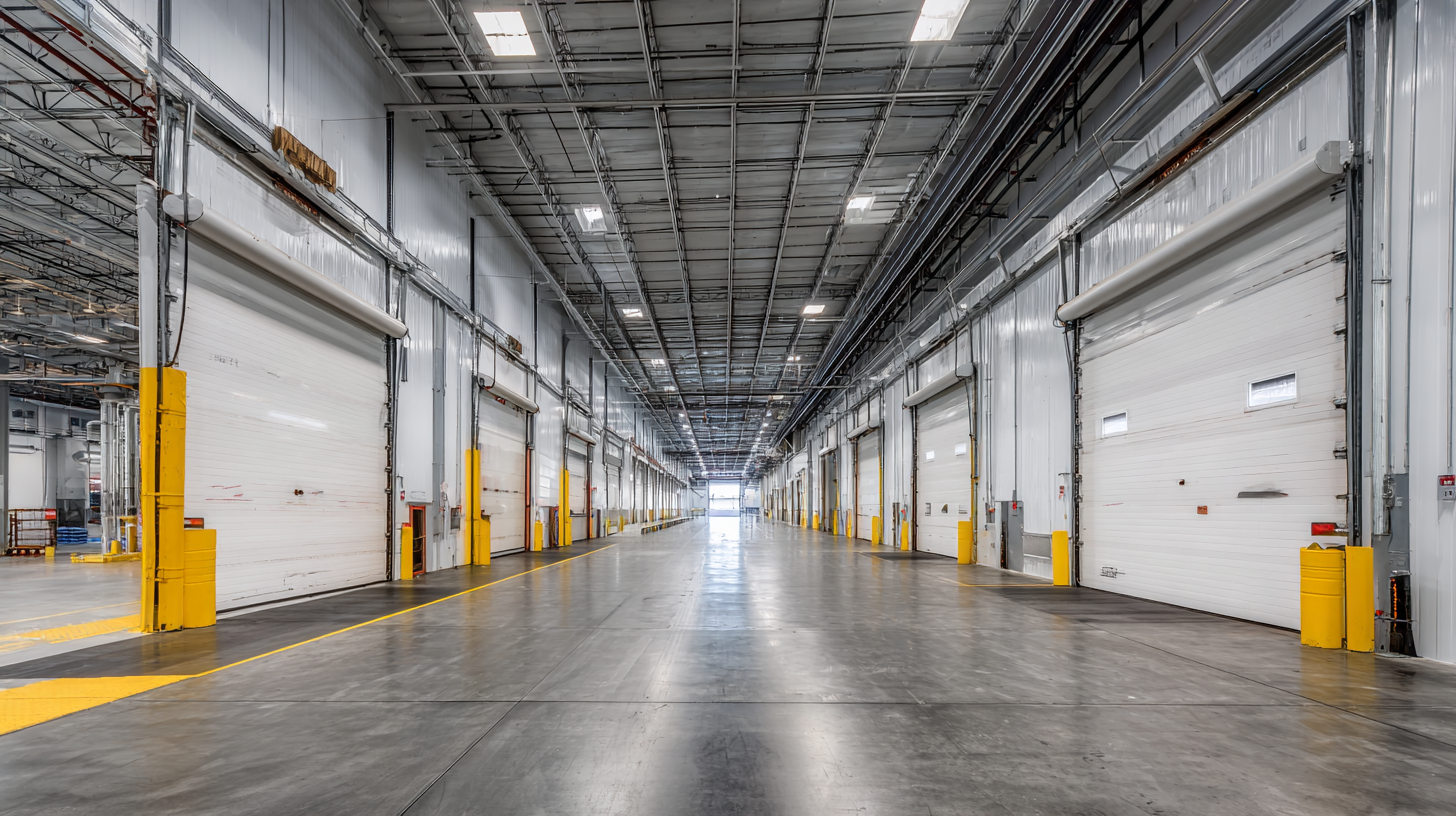
Solutions for Effective Best Roll Doors in Industrial Settings
In today's fast-paced industrial environment, the efficiency of operations can greatly depend on the quality of access solutions employed. Roll doors, essential for seamless transitions between workspaces, are gaining recognition for their ability to enhance productivity and safety. According to a recent industry report by the International Door Association, over 70% of industrial facilities are seeking advanced roll door options to improve workflow and reduce energy costs. With their durable construction and minimal maintenance needs, roll doors provide not only convenience but also substantial long-term savings. This blog will explore the myriad benefits that various types of roll doors offer, illustrating their vital role in contemporary industrial settings and highlighting why they are a preferred choice among manufacturers and logistics firms alike.

Choosing the Right Material for Best Roll Doors in Industrial Environments
When selecting the right material for best roll doors in industrial environments, the durability and performance of the material are crucial. According to a report by the American Society of Mechanical Engineers (ASME), over 30% of mechanical failures in industrial settings are attributed to subpar materials used in door systems. Materials like steel offer high strength and impact resistance, making them ideal for high-traffic areas, while aluminum is lightweight and resistant to corrosion, suitable for environments with exposure to chemicals.
Tip: Consider the specific environmental conditions of your facility, such as temperature variations and potential chemical exposure, when choosing door materials. High-density polyethylene (HDPE) is an excellent option for environments that require insulation as it maintains its structure and integrity under fluctuating temperatures.
Furthermore, door systems with insulated panels can contribute to energy savings. A study by the U.S. Department of Energy revealed that insulated roll doors can reduce energy costs by up to 25% in warehouses. This makes the choice of material not only about durability but also about long-term cost efficiency and sustainability.
Tip: Evaluate the total cost of ownership, including installation, maintenance, and energy efficiency, when selecting materials for roll doors to ensure they meet both operational and budgetary requirements.
Key Features to Look for in Industrial Roll Doors
When selecting effective roll doors for industrial settings, it’s essential to consider key features that can enhance operational efficiency and safety. Recent reports indicate that the global industrial door market is projected to grow from USD 4.25 billion in 2024 to USD 6.65 billion by 2033, reflecting a CAGR of 5.1%. This robust growth underscores the increasing demand for high-performance roll doors that meet specific industrial needs, such as durability, security, and accessibility.
One of the primary features to look for in roll doors is the material used in construction. Doors made from high-strength composites or metal ensure durability against wear and environmental challenges. Additionally, energy efficiency is another critical aspect, as advanced designs can help maintain climate control within warehouses and production facilities. Furthermore, modern roll doors often incorporate automation technologies for enhanced user convenience and safety, which aligns with the recent industry trends noted in the evolving roller shutter market, expected to reach USD 24.21 billion by 2034. Selecting roll doors equipped with these features can significantly improve operational workflow and reliability in dynamic industrial environments.
Solutions for Effective Best Roll Doors in Industrial Settings - Key Features to Look for in Industrial Roll Doors
| Feature | Description | Benefits |
|---|---|---|
| Material | High-quality steel, aluminum, or vinyl options. | Durability and resistance to wear and tear. |
| Insulation | Insulated panels for thermal efficiency. | Energy savings and temperature control. |
| Safety Features | Sensors and emergency stop options. | Protection of workers and equipment. |
| Speed of Operation | Quick opening and closing mechanisms. | Increased workflow efficiency. |
| Customization Options | Various sizes, colors, and configurations. | Tailored solutions for specific needs. |
| Maintenance Requirements | Design for easy access and servicing. | Reduced downtime and operational costs. |
Maintenance Tips to Extend the Lifespan of Roll Doors
Maintaining roll doors in industrial settings is crucial for ensuring their longevity and optimal operation. According to a report from the International Door Association, regular maintenance can extend the lifespan of roll doors by up to 50%. By implementing a proactive maintenance plan, businesses can avoid costly repairs and minimize downtime.

To keep roll doors functioning effectively, consider the following tips: First, conduct regular visual inspections to identify any signs of wear or damage, such as frayed edges or misalignment. Addressing these issues promptly can prevent further deterioration. Second, lubricate moving parts regularly with high-quality, industrial-grade lubricants to reduce friction and prevent rust development. A well-lubricated door operates more smoothly, enhancing efficiency and safety in the workplace.
Additionally, it's vital to keep the door tracks clean and free of debris to ensure seamless operation. A study by the Door and Access Systems Manufacturers Association (DASMA) indicates that a clean track can improve the functionality of roll doors by 40%. By following these maintenance tips, industrial settings can ensure their roll doors remain reliable assets for years to come.
Integrating Technology for Enhanced Roll Door Performance
In today’s industrial settings, the integration of technology into roll door systems has become crucial for maximizing performance and operational efficiency. According to a report by MarketsandMarkets, the global industrial door market is projected to reach $12.54 billion by 2025, with technological advancements driving much of this growth. Automated roll doors equipped with smart sensors and IoT capabilities are proving to be game changers, enabling real-time monitoring and improved safety protocols.
Moreover, the adoption of energy-efficient roll doors contributes significantly to reducing operational costs. The U.S. Department of Energy estimates that effective use of insulated roll doors can save up to 30% in energy costs for warehouses and manufacturing facilities. By integrating features like thermal insulation and automatic closing mechanisms, businesses can not only enhance energy efficiency but also ensure optimal airflow and climate control within their facilities. Investing in these technological solutions is essential for any industrial operation looking to improve both functionality and sustainability in their operations.
Solutions for Effective Best Roll Doors in Industrial Settings
This chart illustrates the performance metrics of modern roll doors in industrial settings, highlighting speed, durability, energy efficiency, and maintenance costs. The integration of technology has significantly enhanced these parameters, making roll doors a reliable choice for various applications.
Cost-Effective Solutions for Installing Roll Doors in Factories
When it comes to ensuring operational efficiency in industrial settings, the installation of roll doors can greatly affect productivity. According to a recent report by MarketsandMarkets, the global industrial doors market is projected to reach $18.26 billion by 2028, with a significant portion driven by the need for cost-effective solutions in factories. Roll doors offer a unique blend of durability and functionality that can streamline processes while minimizing energy loss.
The initial investment in roll doors can be a concern for many manufacturing facilities; however, considering their long-term benefits is crucial. Research indicates that well-installed roll doors can reduce energy costs by up to 30% by providing better insulation and preventing air infiltration. Additionally, the swift operation of roll doors allows for improved traffic flow in factories, which can enhance throughput by 20% in high-traffic areas. Businesses should evaluate their options and consider investing in these energy-efficient solutions to improve their operational effectiveness and reduce overhead costs in the long run.












